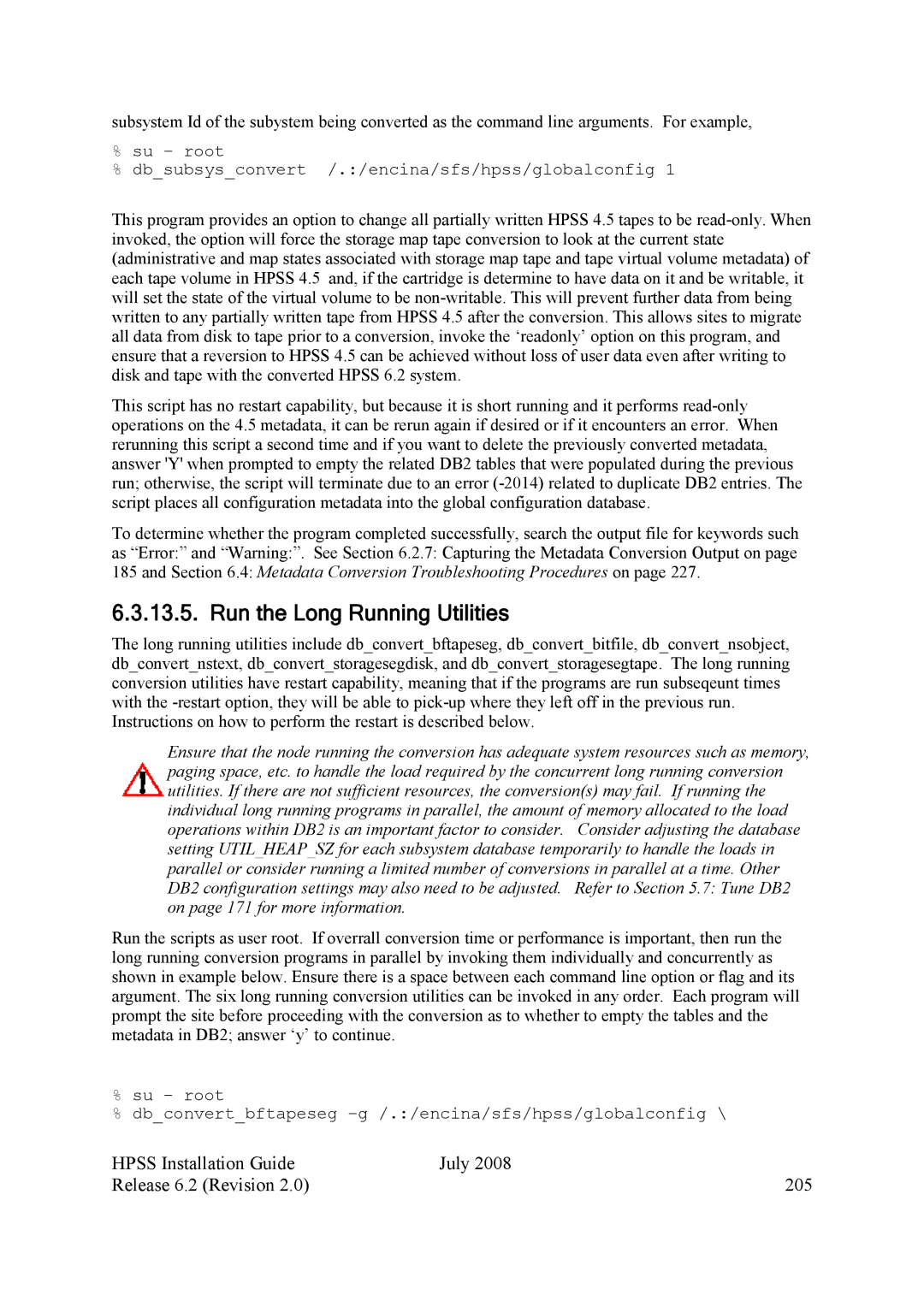subsystem Id of the subystem being converted as the command line arguments. For example,
%su – root
%db_subsys_convert /.:/encina/sfs/hpss/globalconfig 1
This program provides an option to change all partially written HPSS 4.5 tapes to be
This script has no restart capability, but because it is short running and it performs
To determine whether the program completed successfully, search the output file for keywords such as “Error:” and “Warning:”. See Section 6.2.7: Capturing the Metadata Conversion Output on page 185 and Section 6.4: Metadata Conversion Troubleshooting Procedures on page 227.
6.3.13.5. Run the Long Running Utilities
The long running utilities include db_convert_bftapeseg, db_convert_bitfile, db_convert_nsobject, db_convert_nstext, db_convert_storagesegdisk, and db_convert_storagesegtape. The long running conversion utilities have restart capability, meaning that if the programs are run subseqeunt times with the
Ensure that the node running the conversion has adequate system resources such as memory, paging space, etc. to handle the load required by the concurrent long running conversion utilities. If there are not sufficient resources, the conversion(s) may fail. If running the individual long running programs in parallel, the amount of memory allocated to the load operations within DB2 is an important factor to consider. Consider adjusting the database setting UTIL_HEAP_SZ for each subsystem database temporarily to handle the loads in parallel or consider running a limited number of conversions in parallel at a time. Other DB2 configuration settings may also need to be adjusted. Refer to Section 5.7: Tune DB2 on page 171 for more information.
Run the scripts as user root. If overrall conversion time or performance is important, then run the long running conversion programs in parallel by invoking them individually and concurrently as shown in example below. Ensure there is a space between each command line option or flag and its argument. The six long running conversion utilities can be invoked in any order. Each program will prompt the site before proceeding with the conversion as to whether to empty the tables and the metadata in DB2; answer ‘y’ to continue.
%su – root
%db_convert_bftapeseg
HPSS Installation Guide | July 2008 |
Release 6.2 (Revision 2.0) | 205 |
